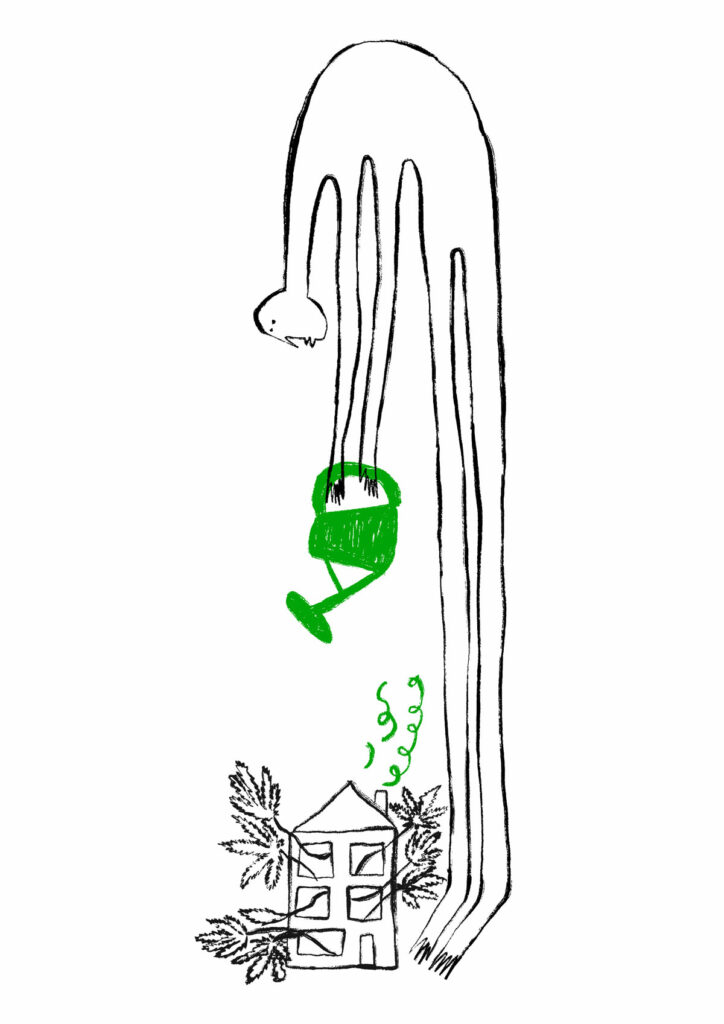The Secret to Growing Your Own Stash
HIGH TIDE IS BROUGHT TO YOU BY THE GENEROUS SPONSORSHIP OF OUR FRIENDS AT THE TRAVEL AGENCY: A CANNABIS STORE
I believe that plant medicine is a human right. Just as we have the right to grow food to nourish our bodies, so should we have the right to grow a plant that eases our physical, social, and spiritual pains: Cannabis sativa. Fortunately, in 2021, the right to grow cannabis at home was written into New York’s Marihuana Regulation and Taxation Act (MRTA).* It’s currently in effect for certified medical cannabis patients and their caregivers, and an expansion to non-medical users is expected to take effect this summer.
This means is that gardeners across New York State will be able to legally nurture up to six cannabis plants (three flowering and three immature) for personal use, with a maximum of 12 plants per multi-person household. To excite and empower this anticipated wave of flower farmers, I’ve spoken to three home cannabis cultivators willing to share their tips on how to nurture your new favorite houseplant from seed to smoke.
*For more information on the Marihuana Regulation and Taxation Act, visit cannabis.ny.gov.

KNOWLEDGE IS POWER
Cultivating weed isn’t rocket science, but it is science. “Growing cannabis isn’t a lot different from growing a tomato,” says Chris, who’s been growing in Nyack for nearly nine years. “It’s easy to grow, but difficult to grow well.”
Before embarking on a growing journey, it’s wise to spend some time learning the anatomy and unique characteristics of the plant. Knowing cannabis anatomy can prevent a common rookie mistake: intermingling male (pollinating) and female (flowering) plants. While male and female cannabis plants look identical when immature, only female plants produce buds. It’s crucial to cull the male plants as soon as you can identify them; this prevents your buds from being full of seeds.
THE INS AND OUTS
The most important decision to make ahead of a grow is to choose whether you want your plants to live inside or outside. Jamie, who grows in the Hudson Valley for their parents who are both cancer survivors, is a huge advocate of growing outdoors: “You need full sun and consistent irrigation, but if that’s already there … it fits right into a kitchen garden.”
But if you’re a city slicker or have limited garden access, growing indoors can still yield exceptional flowers—if you have the right equipment. Investing in a grow tent that comes with full-spectrum lights and circulation fans is the easiest way to get started, but if the cost is prohibitive, don’t be discouraged! Dev, a crafty connoisseur in Brooklyn, started growing five years ago with a system he built from stuff he found on the streets. “I started off in a suitcase, and glued Mylar into it to give it more punch,” he says.
SEED SENSE
Obviously, growing cannabis starts with seeds. While many folks start with seeds that they’ve sifted out of some mid-grade flower, you can purchase better seeds from a dispensary or even online. Purchasing online is fully legal because cannabis seeds contain no THC—the psychoactive and thus legally complicated compound—
but be sure to, as Dev says, “always buy from reputable seed banks.” He recommends specialist retailers like Seedman that carry large selections of strains, as well as auto-flowering and feminized seeds that prevent the male problem (sorry, guys). “Auto-flowers are a really good way to start,” says Chris. “If you buy regular seeds, your chances are 50/50 that you’re gonna get males.”
HIGH MAINTENANCE
About two to three weeks after your seedlings sprout, the cannabis plants will enter the vegetative phase, a time when the plants need the most maintenance. They’ll need around 18 hours of light and six hours of complete darkness as they form roots and branches strong enough to support dense flower buds. Depending on conditions, plants can spend three to 16 weeks in the vegetative phase. Rather than spraying pesticides that can impact the quality of your cannabis (and not to mention your health), Jamie suggests using this time to prune leaves to encourage air flow while monitoring your soil for mold. The attention you give your plants now will help keep them free from pests, fungus, and disease later.
If growing indoors, it’s also essential to enforce a strict light schedule and to prevent any light leaks during this phase. “Any bit of light leakage will stop the plant from growing how it’s supposed to grow,” Dev says.
SEX EDUCATION
After about four to 16 weeks (depending on the plant and growing conditions), your plants will enter the flowering stage, where they’ll need 12 hours of light each day and 12 hours of total dark to form flower buds. Now it’s time to pay attention to where stems join your plants’ stalks, because “as soon as you switch the plants to a flower cycle, they’ll start developing sexual characteristics,” Chris says. Male plants will begin to develop sacs that look like small grape clusters; once you’ve spotted these, immediately cull those males before they pollinate your female plants and fill their buds with seeds.
HARVEST HOME
When it comes to harvesting your plants, it’s not exactly cut and dried. Though buds will stop growing after about six weeks, it takes them another two to five weeks to fully mature. Dev recommends buying a cheap jeweler’s loupe to track the development of your trichomes—the little mushroom-shaped resin glands that coat cannabis flower. Starting out clear and crystalline, the trichomes will turn cloudy white or deep amber when the flower is mature.
Once ready to harvest, the process is literally cut and dry: Trim any excess fan leaves from your plants, then hang the stalks upside down to dry in a well-ventilated area—a grow tent works well. After a few days, the plants should be dry enough for the buds to snap easily off the stalks. But you’re not ready to smoke just yet! Place your buds in airtight jars with humidity packs to cure for at least a month, burping the jars daily to allow for airflow. Curing is an absolutely necessary step for a high-quality end product. As Dev says, “The longer you let it cure, the better the taste, the better the smell, and the cleaner the smoke.”
Tools of the Trade
THESE HANDY ITEMS WILL HELP KICK-START YOUR HOME HARVEST
Mars Hydro 2×2 Grow Tent Kit
Complete with lights, ventilation, and climate monitoring, this compact tent is easy to set up and has everything you need. $323.99; growlightheaven.com
Modern Sprout Gardening Shears
These easily gripped needle-nose shears are sharp, lightweight, and durable—perfect when it comes time to trim. $18.99; modernsprout.com
Jarlink Illuminated Jeweler’s Loupe
Use this inexpensive, illuminated jeweler’s loupe to pinpoint when your flower is ripe and ready to dry. $9.99; amazon.com



